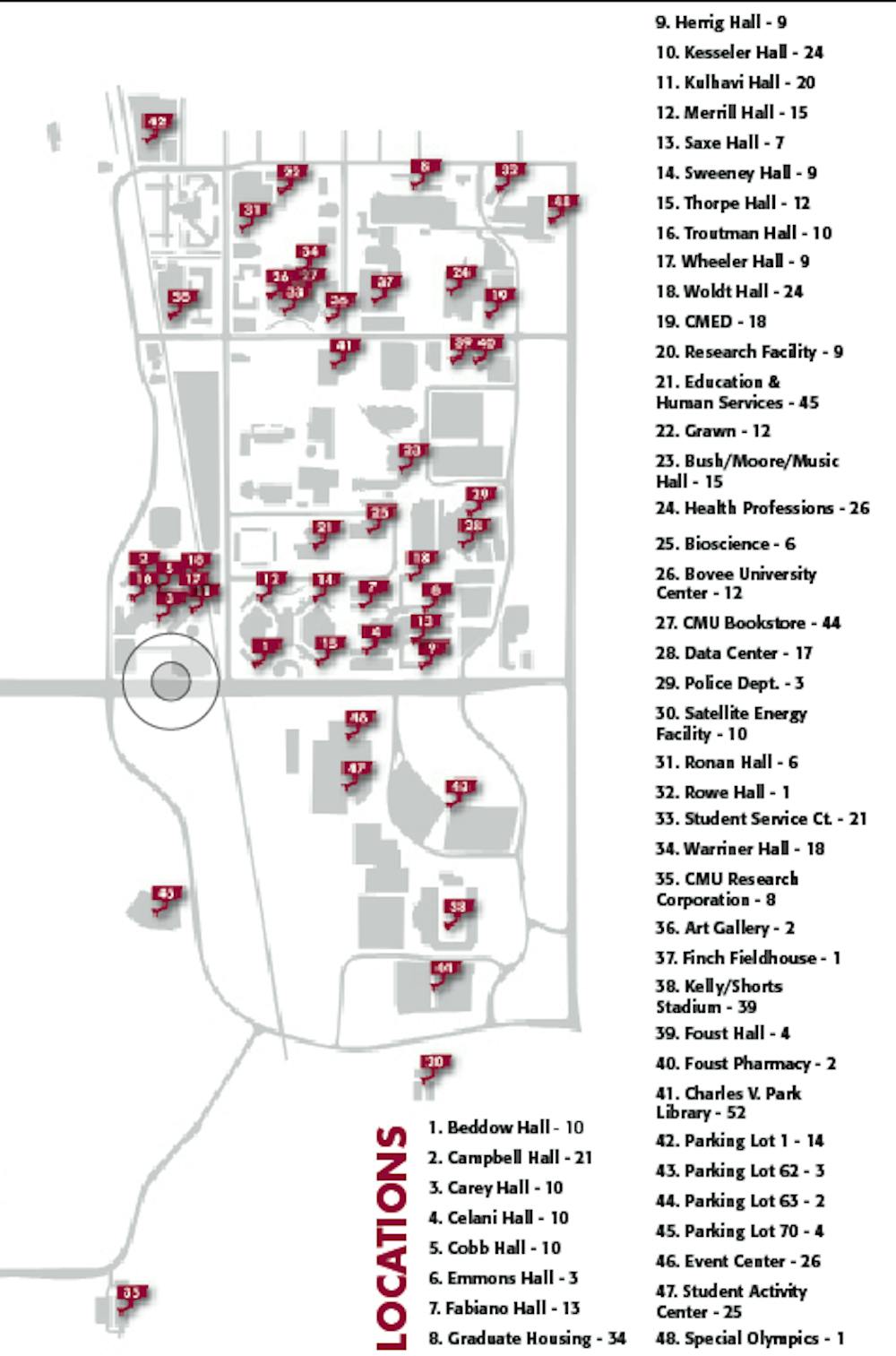Surveillance cameras document campus crimes
Posted throughout campus, 700 cameras record almost every moment at Central Michigan University. One for every 28 on-campus enrolled students,
The CMU Police Department will be adding 45 surveillance cameras to the North Campus Residence Halls this fall. CMUPD began strategically placing surveillance cameras throughout the university in 2002, starting with the Student Activity Center.
Since then CMU has spent a total of $700,000 on surveillance cameras, with an anticipated expenditure of another $45,000 on the new cameras coming this fall. Cameras are funded differently on a case by case basis, but the cost is always covered one of two ways; either the department the cameras are going into will pick up the tab with their budget, or CMU provides special funding.
CMUPD can access live feeds from any of the university’s cameras via their computers, or at any of four the large monitors located in the CMUPD Central Dispatch room, which run a continuous live display of the feeds from the cameras on a rotating cycle.
CMUPD Detective Mike Sienkiewicz Sienkiewicz said officers do not use the cameras for constant monitoring.
“CMUPD does not generally monitor cameras on campus unless there is an incident. 700 cameras would take a lot of people,” Sienkiewicz said. “We do use them more on game days or busy weekends like Welcome Weekend.”
Sienkiewicz said the cameras are a tool to help keep the campus community safe and investigate crimes. In 2013, CMU had a similar number of cameras when compared to Mid-American Conference schools.
One instance in which CMUPD was able to utilize surveillance footage to help with a case was in 2014, when police used cameras located in Lot 1 to identify suspects in a robbery that occurred during Welcome Weekend.
“They were non-students from Saginaw, and we were able to work with law enforcement in Saginaw to identify and convict the suspects by using the video,” Sienkiewicz said.
CMUPD said the placement of any cameras is a carefully calculated decision. New lighting in the lot allowed the cameras to capture a higher quality image of the suspects, but there are areas on campus where things are not as visible.
Surveillance camera footage also played a large part in CMUPD's investigation of 18-year-old Michael Hartnett's death in October. Police were able to track every minute of his time on campus, which allowed them to piece together the events leading to his drowning in the Fabiano Botanical Garden.
“We add new cameras based on the risk associated with the area. Keeping students safe is a priority for us,” Sienkiewicz said. “Having cameras in areas such as residence halls is an important piece of the security in the residence halls.”
Departments can also request that cameras be placed within their buildings based on their own needs.
"If a department expressed a need for cameras, we find a solution to fit their request," Sienkiewicz said.
Once the installation of the new North Residence Halls cameras is complete, all 22 of CMU’s residence halls will have cameras.
When asked about the coming additions, North Campus residents were mostly surprised that their dorms were not already equipped with surveillance cameras. Students have expressed mixed feelings on the extent of surveillance cameras at CMU in the past.
"It's kind of alarming that we don't have any cameras," said Livonia sophomore Rebecca Folson. "Especially since we are so close to the edge of campus."
Folson said more cameras would make her feel safer.
"If you're not doing anything bad, then who cares about the cameras?" Folson said. "We're right next to Main Street where a lot of things happen."
Ubly sophomore Rakel Obsentosky was surprised how long ago the university started using cameras.
“I would have thought that if CMU began installing cameras more than 10 years ago, they would have covered North Campus by now where we have so many incidents,” Obsentosky said.
One of the locations which just recently received cameras is the Health Professions Building due to equipment thefts.
Aside from adding new cameras to the North Residence Halls, CMUPD is working to update existing cameras.
“We’re moving away from analog cameras,” Sienkiewicz said. “It’s basically like switching from standard definition to high definition.”
CMUPD demonstrated the difference between the clarity of new and old cameras on their monitors. Newer cameras provide a much clearer, more defined and focusable image.
Sienkiewicz said police cameras are not the only way to help keep an eye out for CMU's community.
“We encourage students to take care of each other,” Sienkiewicz said. “If you see something, call CMUPD and we can work together to keep the community safe.”




